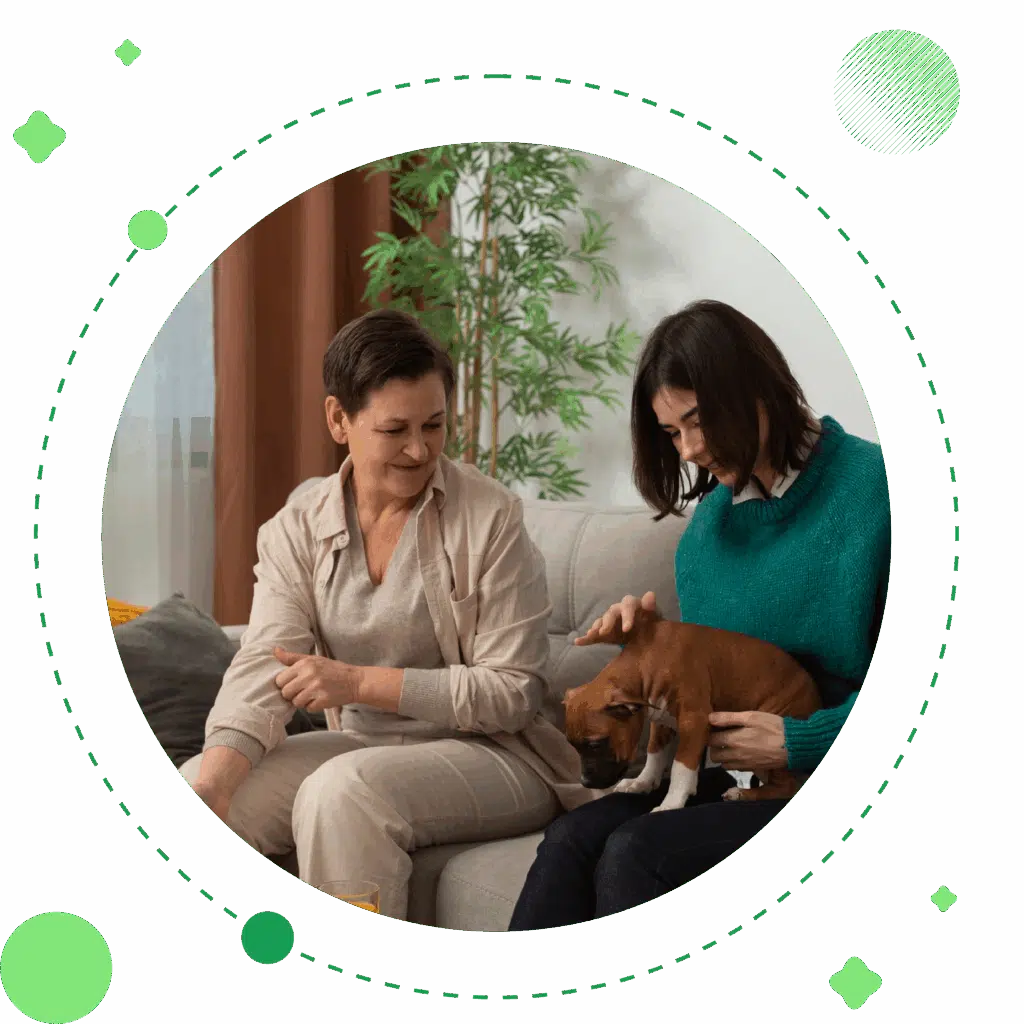Support at Home Program
A New Approach to Home Care
The Support at Home program is Australia’s new in-home aged care system that began 1 November 2025. It was developed in response to the Aged Care Royal Commission’s recommendations for better support at home health.gov.au.
Support at Home replaces the Home Care Packages (HCP) and Short-Term Restorative Care (STRC) programs. It provides coordinated care and services to meet the assessed ageing-related needs of eligible older Australians.

What is Support at Home?
The Support at Home program represents a major reform of in-home aged care. Here are some key differences between the current Home Care Packages/CHSP system and the new Support at Home approach:
Support at Home Includes:
- 8 ongoing classifications with increasing levels of funding
- Flexible, person-centred care that adapts to your needs
- Single provider model for coordinated care
- Quarterly budgets (annual funding divided by 4)
- 3 short-term pathways: Restorative Care, End-of-Life, AT-HM
Three Service Categories
Clinical Supports
Independence
Everyday Living
Who is Affected?
Three groups of people will transition to or enter Support at Home:

Grandfathered HCP Recipients
Approved for HCP on or before 12 September 2024
- Automatic transition on 1 November 2025
- 'No Worse Off' protection - never pay more than now
- Full pensioners paying $0 continue to pay $0 forever
- Lifetime cap: $82,018 (indexed)
- All unspent HCP funds transfer with you

Transitional HCP Recipients
Assessed 13 September 2024 – 31 October 2025
- Receive HCP if assigned before 1 Nov, then move to Support at Home
- Standard Support at Home contribution rates apply
- Lifetime cap: $130,000 for non-clinical services
- Quarterly budgets based on HCP level

New Participants
Assessed from 1 November 2025 onwards
- Go directly to Support at Home
- Standard contribution rates apply
- Lifetime cap: $130,000 for non-clinical services
- Access to all Support at Home services
📋 Note: CHSP (Commonwealth Home Support Programme)
CHSP will transition to Support at Home NO EARLIER than 1 July 2027. Until then, CHSP services continue as normal.
Support at Home Classifications
Tailored funding from 1 November 2025 (subject to annual indexation in July)
| Level | Care Type | Quarterly Budget | Annual Amount |
|---|---|---|---|
| 1 | Basic support | $2,682.75 | $10,731.00 |
| 2 | Light support | $4,008.61 | $16,034.45 |
| 3 | Low support | $5,491.43 | $21,965.70 |
| 4 | Moderate support | $7,424.10 | $29,696.40 |
| 5 | Moderate-high | $9,924.35 | $39,697.40 |
| 6 | High support | $12,028.58 | $48,114.30 |
| 7 | High-intensive | $14,537.04 | $58,148.15 |
| 8 | Complex care | $19,526.59 | $78,106.35 |
💡 How Your Budget Works:
- Your annual funding is divided into 4 quarterly budgets (every 3 months)
- Up to 10% of care management funding deducted each quarter
- You can roll over up to $1,000 or 10% to next quarter (whichever is greater)
- Budgets managed by Services Australia - secure and transparent
- Amounts are indexed annually in July
Transitioning from Home Care Packages
If you’re currently receiving a Home Care Package, you’ll receive equivalent funding under Support at Home. Your HCP annual amount is divided by 4 to create your quarterly budget.
HCP to Support at Home Funding Equivalents
| HCP Level | SAH Classification | Quarterly Budget | Annual Amount |
|---|---|---|---|
| Level 1 | Transitioned HCP Level 1 | $2,746.63 | $10,986.50 |
| Level 2 | Transitioned HCP Level 2 | $4,829.86 | $19,319.45 |
| Level 3 | Transitioned HCP Level 3 | $10,513.83 | $42,055.30 |
| Level 4 | Transitioned HCP Level 4 | $15,939.55 | $63,758.20 |
*Quarterly budgets and annual amounts are effective from 1 November 2025 and subject to annual indexation in July
Your Unspent HCP Funds
- All unspent Commonwealth funds transfer to Support at Home
- No time limit - use them for duration of your care
- Available when your quarterly budget is exhausted
- Can purchase aids, equipment & home modifications
- Must be used BEFORE accessing AT-HM funding
- Managed by Services Australia
📋 Need More Support?
If your needs increase, request a Support Plan Review through My Aged Care. You may be reassessed to one of the 8 Support at Home classifications with higher funding levels.
Grandfathered Participant Protection
You Are Grandfathered If:
On or before 12 September 2024, you were:
- Receiving a Home Care Package, OR
- On the National Priority System (waiting list), OR
- Assessed as eligible for a Home Care Package
‘No Worse Off’ Guarantee – What This Means:
If You Pay $0 Now (Full Pensioner)
If You Pay Fees Now (Part Pensioner/Self-Funded)
Grandfathered Contribution Rates
| Income Status | Clinical Supports | Independence | Everyday Living |
|---|---|---|---|
| Full Pensioner | 0% | 0% | 0% |
| Part Pensioner | 0% | 0-25% | 0-25% |
| Self-Funded (CSHC) | 0% | Up to 25% | Up to 25% |
| Self-Funded | 0% | Up to 25% | Up to 25% |
Important: Services Australia will notify you and your provider of your specific grandfathered contribution amount. These rates apply for your lifetime in Support at Home, even if you’re reassessed to a higher classification.
Standard Contribution Rates
These rates apply to:
- Transitional HCP participants assessed after 12 September 2024
- New participants assessed from 1 November 2025 onwards
Standard Contribution Rates Table
| Your Status | Clinical Supports | Independence | Everyday Living |
|---|---|---|---|
| Full Pensioner | 0% | 5% | 17.5% |
| Part Pensioner | 0% | 5-50%* | 17.5-80%* |
| Self-Funded (CSHC) | 0% | 5-50%* | 17.5-80%* |
| Self-Funded | 0% | 50% | 80% |
*Based on income and assets assessment by Services Australia
Key Points About Contributions:
Key Points About Contributions:
- Clinical care is ALWAYS fully funded - no cost to anyone
- You only pay for services you actually use
- No daily fees required under Support at Home
- Lifetime cap: $130,000 for non-clinical services
- Contributions assessed by Services Australia based on income/assets
Example 1: Full pensioner receives nursing (clinical), personal care (independence), and house cleaning (everyday living).
→ Pays: 0% for nursing, 5% for personal care, 17.5% for cleaning
Example 2: Self-funded retiree receives physiotherapy (clinical), transport (independence), and meal preparation (everyday living).
→ Pays: 0% for physio, 50% for transport, 80% for meals
Short-Term Care Pathways
In addition to ongoing support, three short-term pathways provide extra funding for specific needs:
Restorative Care Pathway
Up to 16 weeks
For: Short-term allied health support to regain or maintain independence after illness or injury
What’s Included:
- Focus on restoring function and skills
- Allied health services (physio, OT, etc.)
- Can be used alone or with ongoing services
- May be extended by additional 4 weeks if needed
End-of-Life Pathway
12 weeks (up to 16 weeks)
For: Dedicated support for people with 3 months or less to live who wish to remain at home
What’s Included:
- Fast-tracked assessment process
- Immediate funding allocation
- Complements state palliative care services
- Available even if not currently in Support at Home
AT-HM Scheme
12 months to use
For: Assistive Technology and Home Modifications for safer, easier living
What’s Included:
- Equipment: wheelchairs, walkers, shower chairs
- Modifications: ramps, handrails, doorway widening
- Three tiers: Low ($500), Medium ($2,000), High ($15,000)
- May access above $15K with prescription evidence
Why Choose Glow Health Care Australia?
24/7 Reliable
Services
Quality Care
Assurance
Personalised Staff
Pairing
Fair Pricing
Commitment
GHCA Is Ready to Support You through the Transition
Glow Health Care Australia has been proactively preparing to make this transition smooth and positive for all our clients. We’re here to guide you at every step, so you continue receiving quality care without interruption.



